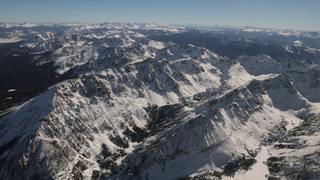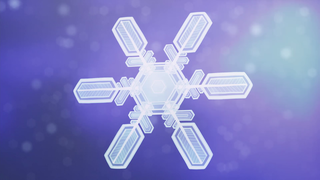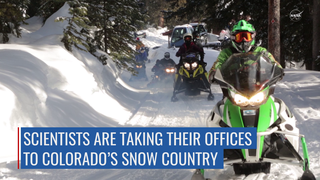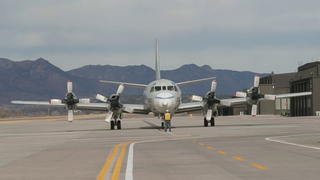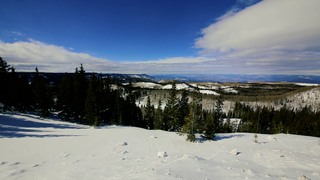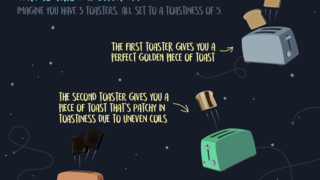Snow Live Shots (Feb. 17, 2017)
Snow doesn’t fall everywhere, but how much falls and where has global consequences
The snapshot of snow from space tells a different story every year. Last January, a winter storm pummeled the east coast and broke several snowfall records. This winter the Sierra Nevada was hit by consecutive storms, each one piling more snow on top of the last storm's snow. NASA’s view from space highlights these dramatic differences, but the story is incomplete.
More than a sixth of the world’s population relies on melt water from seasonal snowpack and glaciers, but it is challenging to measure the volume and depth of snow cover, especially in remote locations and dense forests. Determining exactly how much snow is on the ground globally and understanding the contribution of winter storms to the world’s water resources are key pieces to the Earth system puzzle.
NASA is in the field right now, testing techniques and technologies for measuring snow’s water content. Join NASA scientists on Friday, February 17, from 6:00 a.m – 11:30 a.m. EST to show your viewers NASA’s snow imagery and discuss strides towards improved space-based measurement of snow on Earth.
The effects of snow are global. For example, California’s Central Valley, which relies on seasonal snow melt, constitutes only 2 percent of US cropland, yet it produces nearly half the nation’s fruits and nuts. The benefits of snow measurements are huge because of the importance of snow to agriculture, water security, natural hazards and more.
Thanks to a half-century of snow observations, we know these amazing facts, which are crucial to understanding what’s necessary to advance snow measurements.
• More than one-sixth of the world’s population (1.2 billion people) relies on melt water from snowpack and glaciers.
• Up to 70 percent of water resources in the western United States are from snow melt. In California, more than 70 percent of water from the San Joaquin River, which originates from Sierra Nevada snow, is used to irrigate the Central Valley.
• 60 million people in the U.S. rely on snowmelt as their primary source of freshwater.
• Globally, 30 percent of land area gets covered by snow and about half of the snow cover area has tree cover of some sort.
• Since 1967, a million square miles of spring snow cover has disappeared from the Northern Hemisphere, an area the size of the entire southwestern United States.
• NASA’s Global Precipitation Measurement Mission (GPM) tracks falling snow, including off the coast where few observations exist, in the mountains where ground-based radar may have challenges, and even at the tops of hurricanes.
• Snowflakes (crystals) have six sides, but most of the snowflakes we see are multiple crystals stuck together. Snow crystals stick together and begin to change or metamorphose as soon as they fall to the ground.
• The same sensing technology used to measure seasonal snowpack on Earth can be used to measure ice on Mars.
*** To Book a Window ***
Contact Clare Skelly – clare.a.skelly@nasa.gov / 301-286-4994 (office)
HD Satellite Coordinates for G17-K18Upper: Galaxy 17 Ku-band Xp 18 Slot Upper| 91.0 ° W Longitude | DL 12069.0 MHz | Vertical Polarity | QPSK/DVB-S | FEC 3/4 | SR 13.235 Mbps | DR 18.2954 MHz | HD 720p | Format MPEG2 | Chroma Level 4:2:0 | Audio Embedded
Suggested Questions:
1. NASA satellites see snow cover from space. How does this winter compare to previous years?
2. NASA scientists are in the field right now testing advanced technologies for measuring snow. How will these new measurements be used?
3. Can NASA actually see falling snow from space?
4. Up to 70 percent of water resources in the western United States come from snow melt. California has been getting heavy rain and snow recently, does that mean the drought is over?
5. How does snow impact parts of the country that rarely see any snowfall?
6. Where can we learn more?
Scientists:
Dorothy Hall / NASA Scientist
—or—
Matthew Rodell / NASA Scientist
—or—
Dalia Kirschbaum / NASA Scientist
Related
Credits
Rich Melnick (HTSI): Editor
Michelle Handleman (USRA): Producer
Jenny Hottle (NASA/GSFC): Producer
Michael Randazzo (Advocates in Manpower Management, Inc.): Lead Editor
NASA's Goddard Space Flight Center
https://svs.gsfc.nasa.gov/12497
This item is part of this series:
Narrated Movies
Keywords:
SVS >> HDTV
NASA Science >> Earth
